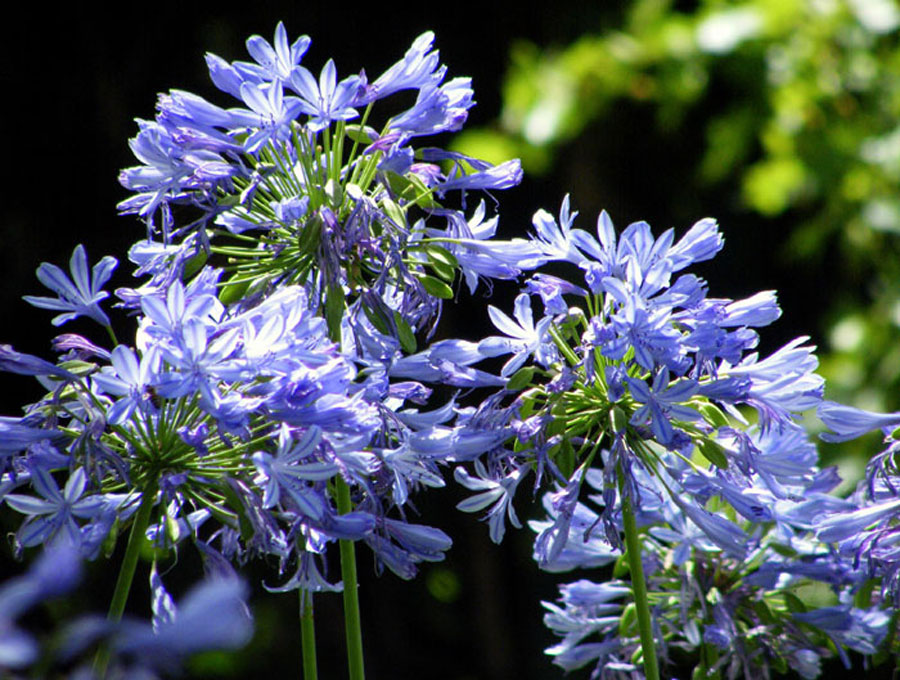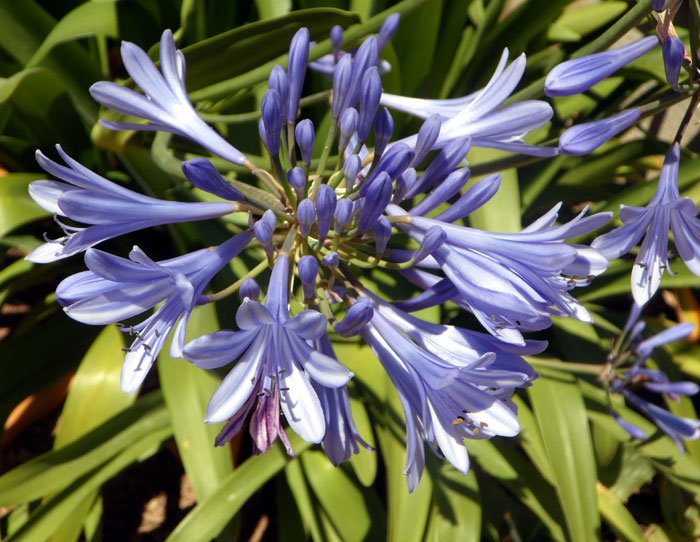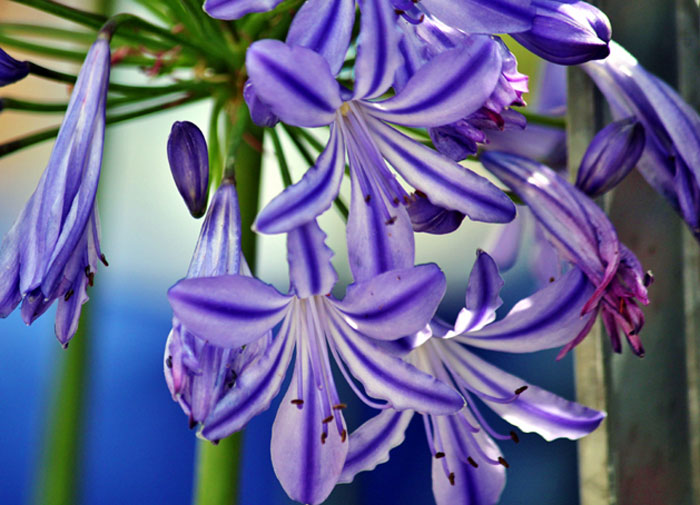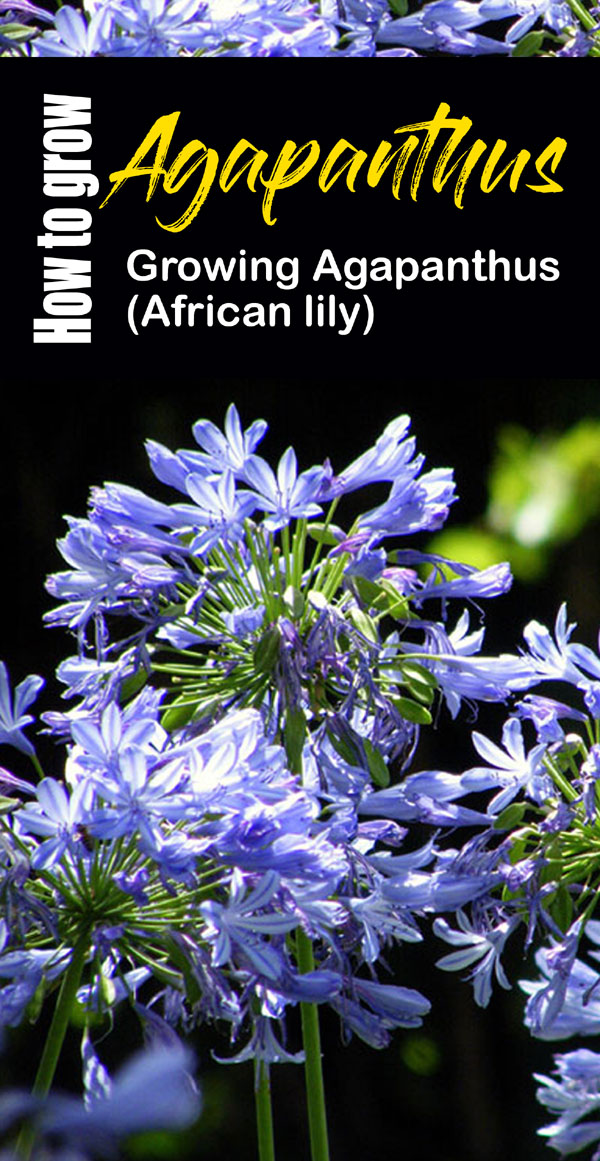Agapanthus (lily of the nile)
Agapanthus africanus (lily of the nile) is a popular perennial that grows from a bulb-like rhizome. African lily is a tough survivor in the face of chronic drought. The strappy evergreen/semi-evergreen leaves of the plant provide winter presence, while the flowers are of blue and white color that adds a charge of mid to late summer color. Learn How to grow agapanthus flowers and agapanthus care in this article.
African lily overview
Agapanthus Flowers is popularly known as African lily and they make an excellent cut flower. Agapanthus are of two types, evergreen and deciduous, deciduous agapanthus are hardier than the evergreen agapanthus, and they can survive British winters if are grown in a sheltered spot. They can also cop up with salty sea winds, which makes them the perfect choice for coastal gardens.
Lily of the nile reaches up to 4 feet when matures and blooms from the period of June and August. The plant strikes blue and white flowers which are tall and slender stalk, that is very attractive and beautiful to look at.
How to grow Agapanthus
Planting time
Fall or winter is best for planting Agapanthus in warm climates. African lily has beautiful trumpet-shaped flowers and leaf texture, and it makes a lovely back border or focal plant because of its height. The flowers of Agapanthus can also be used in container plantings in cooler regions.
Soil and location
Agapanthus should be grown in a sheltered spot in full sun. Though they can tolerate to a wide variety of soil conditions, it prefers well-drained soil. Make sure to cut the back spent flower heads after blooming and should be mulched annually with well-rotted compost or any other organic matter. Mulching is very helpful in retaining the moisture with new plants set about 1 to 2 inches.
The growth and health of African lily depend on full sun ad well-drained soil. Agapanthus plants are drought-tolerant, these can be encountered in gravel orchards. If Agapanthus is kept in pots and their roots are restricted then they tend to flower better.
Watering
If your Agapanthus Flowers are planted in your garden then water it for the first year after planting, and if it is planted in a pot, then it will require watering more regularly.
Fertilizer
A liquid tomato feed will benefit the pot grown Agapanthus. You can collect the seeds by leaving the faded flower heads. Deadhead spent blooms to encourage more to form.
Propagation
To maintain the health and performance of the plant, divide the congested clumps of the plant every four or five years. Lift it and carefully divide the crowns of the plant with a sharp spade, also make sure that each section has at least two growing points. You can use garden forks to divide very established clumps, back to back. This process can be done in the spring season and after flowering in autumn.
Agapanthus care
- Though you can grow some species from the collected seeds of Agapanthus they will not come out to be true to type. Agapanthus requires very little care once planted, it is very easy to grow in warmer regions.
- Cover the crowns of the hardy deciduous African lily with straw to protect it in winters. Leave the foliage of the plant uncut as this will provide it with additional winter protection.
- Some evergreen Agapanthus may survive in winters, but not to risk it and it is better to move them indoors in winters. In winters, lift the garden Agapanthus and pot them up in a light and cool place but which is frost-free.
- Make sure to move the pot-Agapanthus in cover in winters. Water it once a month and then place it back outdoors after the frost has passed.
- Because agapanthus is poisonous, extreme precautions should be taken when handling it. The plant causes skin irritant if ingested, so people with sensitive skin should wear gloves while handling the plant.
Container planting
As said, plant Agapanthus in springtime in pots, or you can plant them directly in your garden. Plant it ideally at a foot of a south-facing wall or somewhat similar so that offers protection during the winter season.
It is better to choose a terracotta pot for planting the roots because it will keep the roots warm in summer. It is preferable to feed the plant in spring with a slow-release fertilizer and use a soil-based compost.
Read also:
How to care for Orchids. How to grow Nigella Damascena flowers. Best flowers for Bees and butterflies. 09 leaf plants for containers. Direct sow vegetables in the garden. Growing winter vegetables. Growing Daylilies in pots. Poppies growing and care tips. Princess flowers growing guide. Turnips growing and care tips. Hoya plants( Wax plants) care tips.
For pin:







